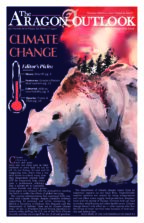

The San Mateo Civil Grand Jury has investigated the considerable health and safety concerns regarding recycled tire rubber, or “crumb rubber,” used for playground and athletic field surfaces. On July 10, the grand jury released a report urging school districts, including the San Mateo Union High School District, to stop the use of turf derived from rubber tires until an ongoing study by the Environmental Protection Agency provides further data on the health effects. Currently, the school’s football field is an artificial turf field, which has crumb rubber.
According to the Grand Jury’s report, the presence of lead and other toxins in tire-derived turf has led to the concerns among education communities as to whether the materials could be related to cancer and other negative health effects. According to the San Mateo Daily Journal, out of the 192 athletic fields managed by the 23 school districts in San Mateo County, 29 are made of artificial turf from tire-derived products, and 16 are considering field replacements within the next five years.
According to the Civil Grand Jury report, maintenance for SMUHSD turf fields come out to an annual average of $10,600 per field. In the case of damage to the underlaying carpet, the repairment cost is $700,000. On the other hand, annual maintenance cost for each grass field is $2,850.
Football coach Steve Sell mentioned the future of the football field’s turf.
“There is no science that has proven or established that those little black pellets are harmful,” he said. “There is a lot of speculation, but there is no science.”
“The first [crumb rubber] turf field we played on was about 2001, so we are talking about 16 years that people have played on this stuff,” Sell said. “And I think there would be something definitive by now.”
According to Sell, Aragon’s turf was last replaced ten years ago, so the plans to replace it are due to old age rather than claims that tire-derived turf causes cancer.
“The turf is getting old so we have to replace it, just like carpet,” Sell said.
However, multiple risks of tire-derived turf have been identified. For example, modern tires are a mixture of natural and synthetic rubber or materials made from petroleum. These chemicals, such as dibenzopyrenes, are known carcinogens, and have the capability of causing cancer in a living tissue. In addition, any chemicals that the tire had been exposed to in its use can be absorbed into the tires, according to the Washington Post.
Senior Zack Gee was initially unaware of possible dangers of crumb rubber.
“I personally don’t think playing on turf is a big deal just because it cushions people when they fall and doesn’t really hurt people when they play on the turf,” he said.
Yet once becoming aware of the possible dangers, his opinion changed.
“After hearing that, I would second-guess playing on the turf because people are constantly sliding on it and it gets in your eyes, mouth and all over your body,” he said. “I would rather play on grass to reduce those chances.”
Junior soccer player Nicole Schulman discusses the benefits and drawbacks of playing on turf.
“I like turf fields because they are usually flat so the direction of the ball is predictable,” she said. “[However,] as a goalie, I often swallow a lot of turf … I also get turf burns almost every day, and turf is super dirty, so I occasionally get infections.”
Rubber fields also tend to have a smell while fields made of organic components are not as odorous.
“Any turf that is healthier to play on than rubber would be a better option.”
Replacement of Aragon’s turf is scheduled to occur within the next year, however, the replacement material, whether grass or turf, is yet to be decided.

